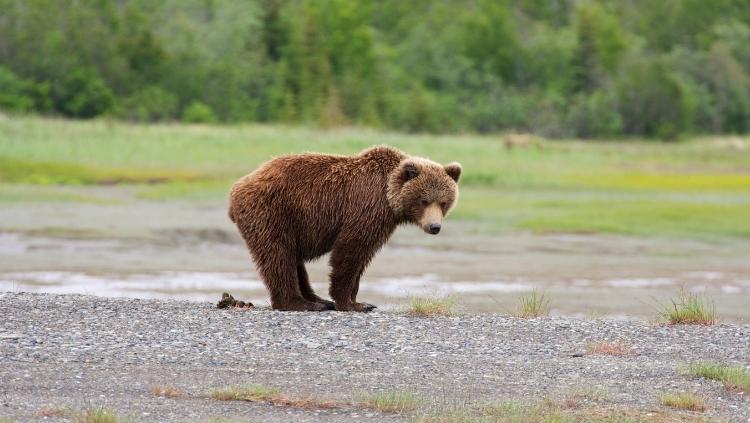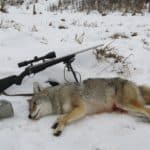Anyone who spends time in nature knows that finding animal poop on or near a trail is more than just a gross inconvenience. Poop may provide vital information about the area you trek, and learning to identify the animal that left it could save you from a very dangerous encounter.
Bear scat is fairly easy to spot. It is typically large, but in areas where you find other large animals, that may not be enough information to help you identify the presence of bears before you run into them in the wild.
This guide provides tips for:
- identifying bear poop,
- differentiating between it and the scat of other large animals,
- and determining what type of bear left it.
What Is Bear Scat?
Scat is just a technical term used to describe animal droppings in the wild. You probably do not spend much of your life thinking about the poop that animals leave behind, but some scientists do. Scats can provide vital information about an animal.
Scientists use it to determine what animals are in the area and what they eat. They can also extract DNA to determine the genetic health of an entire species without using an invasive procedure and use this information to direct conservation efforts.
What Bear Poop Looks Like
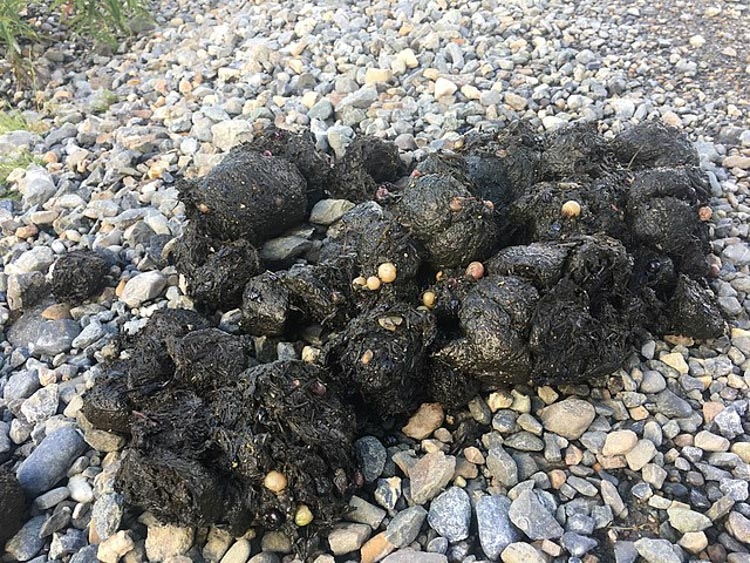
Bear poop is large and tubular with blunt ends, much like human feces. Often found in piles filled with seeds, hair or other remnants of an omnivorous diet, bear scat can measure between 5-12 in long. Just as grizzly and brown bears are larger than black bears, so is their scat.
The consistency varies depending on the bear’s diet, but you often find a blunt start on one end and a tapered end on the other. More often than not, you’ll find a pile of it.
Bears are known meat lovers, but they are omnivores. They prefer meat whenever it is available, but bear poop often contains fruits, berries, grass, and roots. Ultimately, the appearance of bear poop also depends on the region. Brown bears in coastal areas eat large amounts of fish, which softens the stool.
What Are the Differences in Bear Scat?
Knowing the types of bears helps you better answer the question, “what does bear scat look like?”
In various areas of North America, you can find four types of bears: black bears, brown bears, grizzly bears, and polar bears. They mostly live in wooded, mountainous areas, and they vary in temperament.
Since your chances of running across a polar bear are slim, we will focus on the scat of black, grizzly, and brown bears.
You can usually determine if the poop belongs to a black, brown, or grizzly bear just by considering your location and whether or not it aligns with the range of a particular bear species.
Below is a guide to help you identify what bear poop looks like based on color, shape, size, and content.
Black Bear Scat
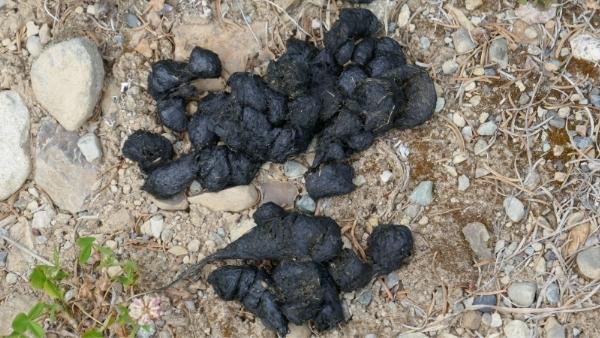
If you find a large pile of poop along a hiking trail in Colorado or Central Idaho, it most likely belongs to a black bear. Characteristics of black bear poop include:
Color: It is typically dark in color. A range of brown to black depends on the diet of the bear. For example, a mixed diet will be darker in color than a diet of a single item, such as berries.
Shape, size, consistency: Black bear poop is typically tubular in shape and large. Consistency can change the shape. For example, a diet of majority fruit will typically result in a looser stool and create a flatter, softer pile.
Contents: Poop changes seasonally for black bears. They eat more vegetation and insects in the warmer months and more berries and seeds in the cool and cold months. With a diet made up largely of berries, you can expect a looser stool, sometimes full of whole berries.
Black bears live in areas highly populated with deer and other small mammals. These bears often leave remains from their prey, such as hair and bone, in their poop.
Grizzly Bear Scat
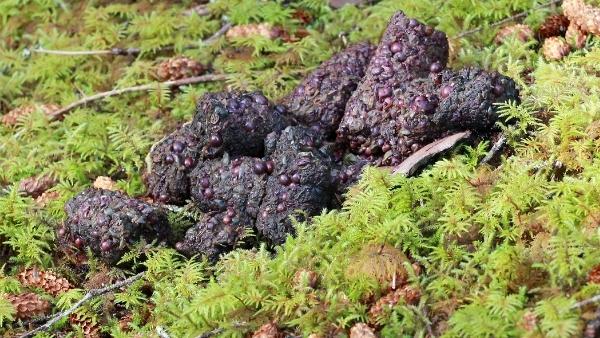
Grizzly bear excrement is very similar to that of black bears. The color is typically brown or black, and the contents usually show a diet of berries, meat, vegetation, roots, and insects.
However, grizzlies tend to eat larger prey and leave larger piles of poop. You can expect their terds to be longer with a larger diameter.
Brown Bear Scat
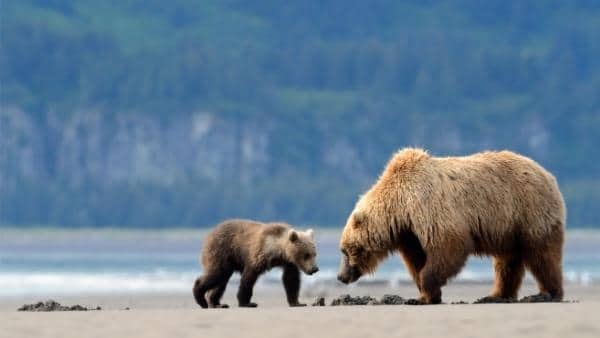
Brown bear scat is basically the same size, shape, content, color, and consistency as that of grizzlies. However, brown bears live more on the Pacific coast and, therefore, have a diet higher in fish.
That will create a lighter, more globular-shaped poop when fish is eaten in excess.
What Should You Do if You See Bear Scat?
Before planning a hike or camping trip in a wooded area, you should always research what animals are typically in the area and what you should do if you come across one. If you know what to look for, you could avoid blindly walking into a dangerous encounter.
Here are a few tips if you are wondering what to do if you see bear scat:
1. Ask yourself if it looks fresh.
If it appears dry or moldy, it has been there for a while and the bear is potentially long gone. If it appears wet and soft or gives off heat, it is probably fresh, which means that the bear could be nearby.
2. Look around for other signs of bears.
Do you see bear tracks on the ground? If you do, determine which way they go and travel in the opposite direction.
Check for daybeds. Resting bears often create an area on the ground or in moss to lie down. You may find scat all around the daybed area as well.
3. Look for territory markings.
Bears are territorial and tend to mark their areas. If you see claw marks, bite marks, scraped off tree bark or even gnawed-on fence posts, bears are in the area.
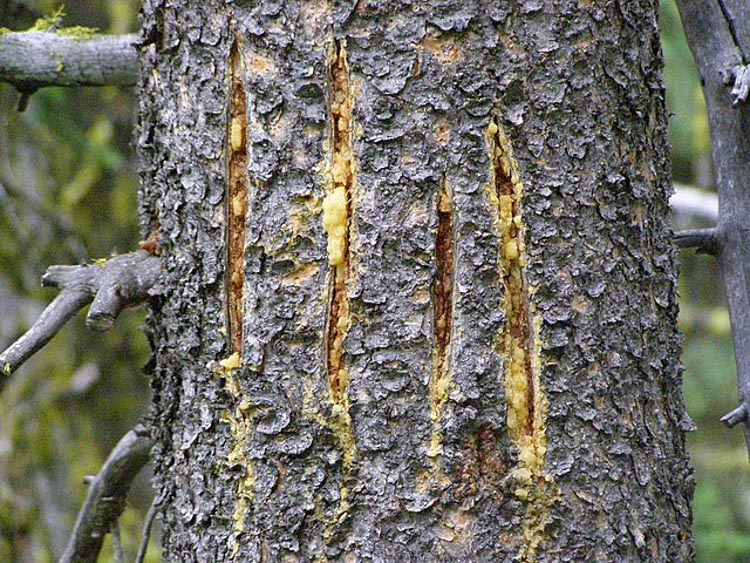
If you see a bear in the distance, the most important thing you can do is stay calm and go in the opposite direction. Carry bear spray with you when you plan to go to an area known as a home for bears.
Related: How To Use Bear Spray Properly to Survive a Bear Attack
Recommended: Best Bear Sprays To Save Your Life (Reviewed & Tested)
However, if you’re out hunting bears, finding their scat might be exactly what you’re looking for.
Interesting Bear Scat Facts
What is bear scat? Here are some crappy facts you can use the next time someone asks that question:
1. When a bear eats a diet heavy in berries and deposits a berry-filled poop, the poop fertilizes the berry seeds and actually grows a new berry bush. In that way, bears create another food source for themselves by pooping.
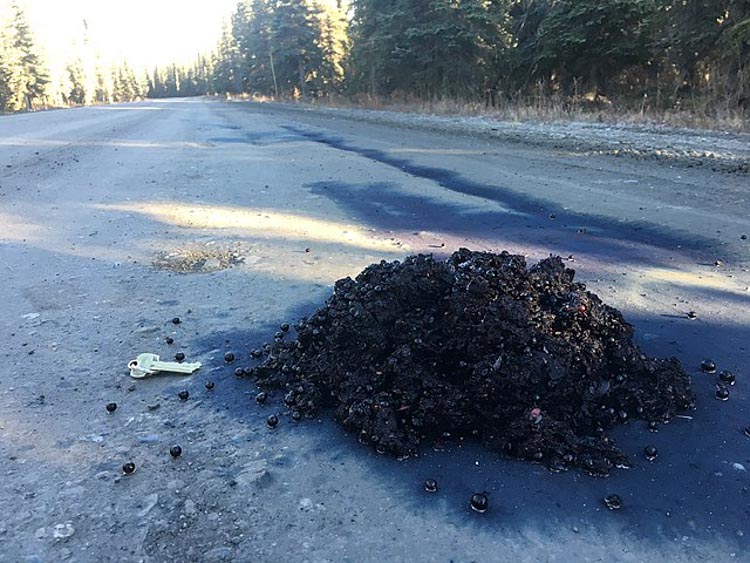
2. Distinguishing between the scat of a black bear and a grizzly bear is sometimes difficult. However, if you find scat larger than 2 inches (5 cm) in diameter, it is probably from a grizzly bear.
3. Bears that eat a diet high in salmon help trees grow because salmon-filled scat is high in nitrogen. They’re natural fertilizers.
4. You sometimes find garbage, such as plastic wrappers, in bear poop. This indicates that the bear has been eating from a garbage source. This is common for black bears that frequent campgrounds, which is why keeping campgrounds clean is so important.
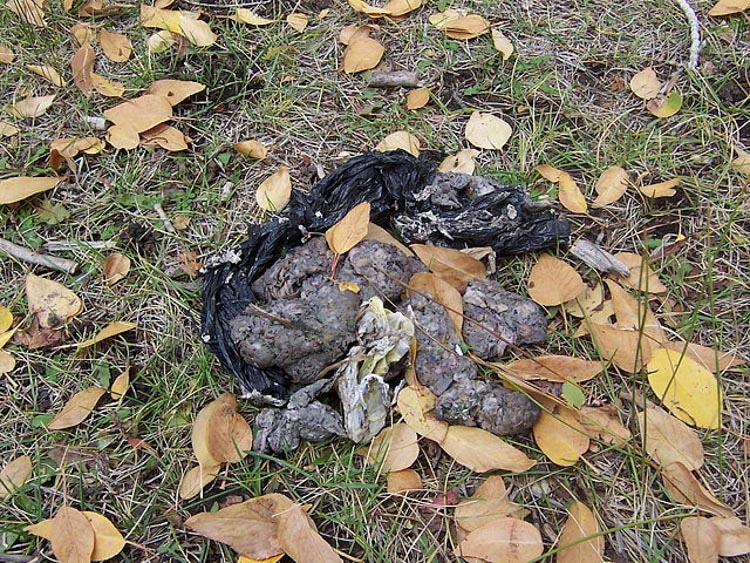
5. A bear that recently ate salmon sometimes leaves scat that resembles an uncooked pancake.
6. Signs of roots or tubers in bear poop likely indicate that it was left by a grizzly or brown bear because black bears do not have claws long enough to dig them up.
7. Fresh scat steams in cool weather. Older scat is surrounded by insects and may have mold on it.
8. If you come across an area with a heavy concentration of scat piles, a bear probably lives in or frequents the area. You should move on through quickly.
Final Thoughts
Bear scat may sound like an unsavory topic, but it is essential. It might even sound trivial to wonder what bear poop looks like, but a survivalist would tell you that it could save your life in more than one way.
A researcher will say that any type of animal scat is a vital source of information, and an adamant hiker will tell you that the more knowledge you have about wild animals, the better equipped you are to keep yourself safe on a camping trip.
FAQs About Bear Scat
1. What Other Scat Resembles Bear Poop?
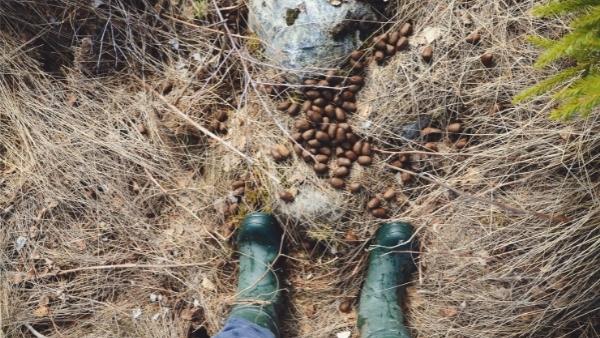
It would be difficult to mistake bear poop for most other animals’ feces, perhaps with the exception of mountain lion or wolf.
You might assume that a moose, which is a huge animal, would leave behind similar scat.
However, moose have distinctly different diets than bears, and while their scat is large, it is also pellet-like in shape. The average moose or large elk poop is about 1-inch long. Compared to what bear poop looks like, that is considerably shorter.
Large cats, such as mountain lions, also have relatively large scat. However, the sizes are vastly different when determining what bear scat is and what is mountain lion scat.
While both are somewhat similar in shape, the bear scat is wider, longer, and greater in volume. Mountain lion scat is typically pointed on both ends. Additionally, mountain lions often have segmented tubular poops.
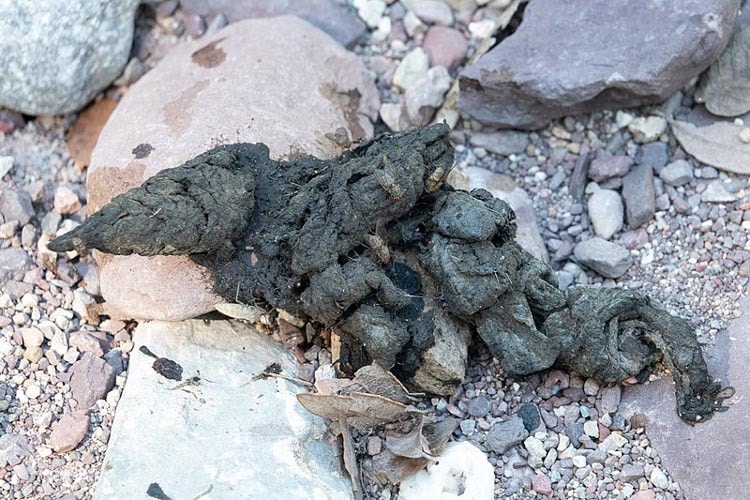
2. Why Is Bear Poop Called Scat?
The term scat is not used strictly for bears. The droppings of any animal can be scat. It is simply another term for poop, albeit a more formal sounding one.
Scat is most often used to describe the excrement of wild animals rather than domesticated ones, specifically because scat is used for research and tracking purposes.
3. Does Bear Scat Smell?
Yes, but bear scat does not have a singular smell. According to the North American Bear Center, it often simply smells like a fermented version of what the bear had to eat. A bear with a diet primarily of fruits and nuts may produce scat with a less unpleasant odor.
4. Is It Edible?
Yes, you can eat bear scat. It is generally not something you dine on by choice, but it can provide protein and some nutrients in a survival situation.
5. What Color Is It?
The color of a bear’s poop depends on the animal’s diet. A mixed diet tends to produce brown or black scat. However, a bear feeding from apple trees may have a lightly colored scat with a loose consistency. It could develop mold and take on a white appearance if it has been there for an extended period.

